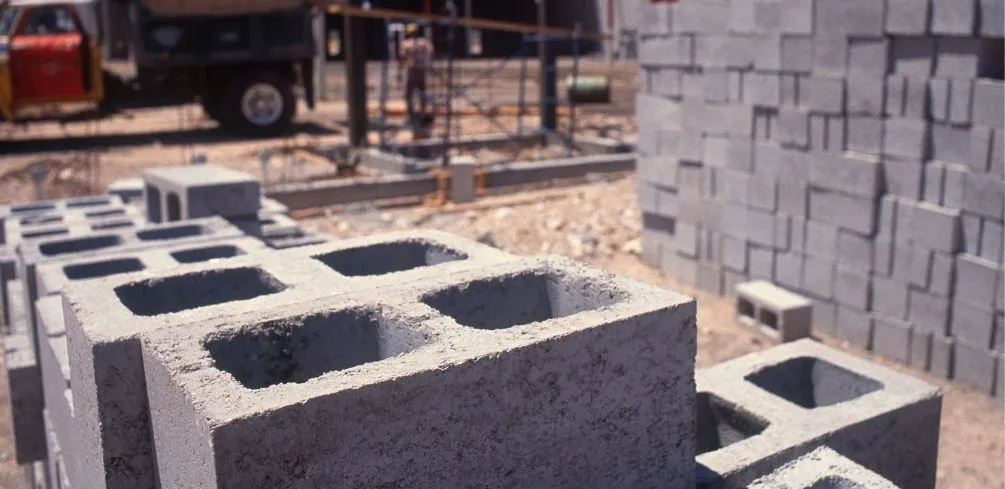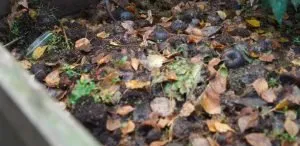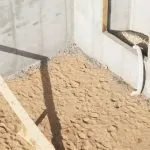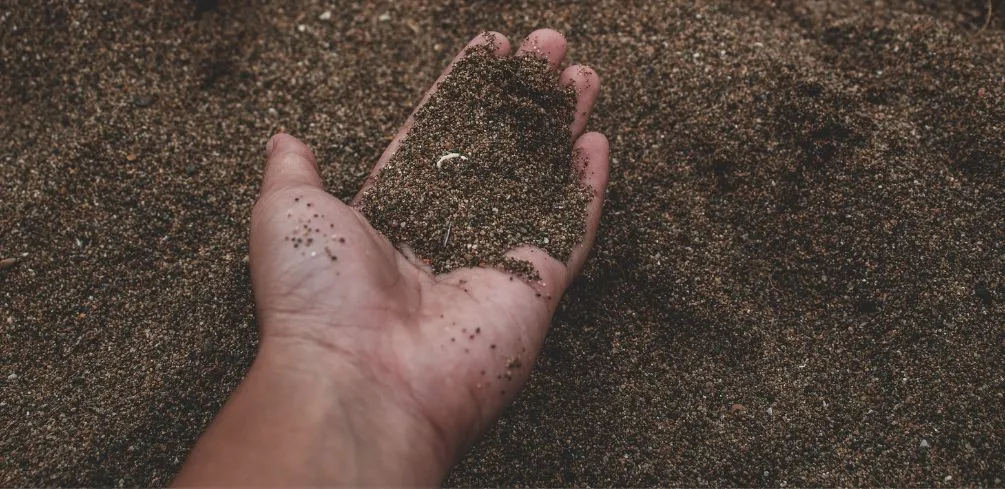It is not recommended. The problem with filling cinder blocks with dirt is that the dirt will eventually settle and compact. This can cause the cinder block to crack or even collapse. In addition, if you live in an area with a lot of rain or snow, the water can seep into the cinder block and cause it to deteriorate.
Cinder blocks are a popular building material because they are inexpensive and versatile. However, finding the right material to use can be tricky if you need to fill a hole in a cinder block wall.
Many people try to fill cinder blocks with dirt, but this often leads to problems.
What are Cinder Blocks?
Cinder blocks are a type of masonry made of concrete and aggregate. The concrete is typically composed of Portland cement, sand, water, and sometimes fly ash or bottom ash.
The aggregate can be anything from gravel to crushed stone. Cinder blocks are usually gray, but they can also be tinted with pigments.
Cinder blocks are very versatile and can be cut or shaped to fit various needs. Cinder blocks are typically used as structural elements in walls, foundations, and chimneys.
They are also sometimes used as paving stones or for making retaining walls. These blocks are also used in landscaping, as they can be filled with dirt and used to create raised flower beds.
Why Filling Cinder Blocks With Dirt is Not Recommended
It is not recommended to fill cinder blocks with dirt. While this may seem like a quick and easy way to raise the level of your property, it can have some negative consequences. They include:
Dirt May Cause Blocks to Crumble Over Time
Cinder blocks are commonly used in construction and landscaping projects to provide structural support and create solid boundaries. However, filling these bricks with soil can adversely affect their structural integrity over time.
This is due, in part, to the inherent characteristics of most soils. Soils contain organic materials, such as decomposed plant matter and small minerals easily dislodged by rain or wind.
As such, soil can quickly degrade the bonding agents between the bricks and crack or crumble with prolonged exposure to water or weathering conditions. Thus, it is generally recommended that cinder blocks be filled with a substitute material instead of dirt, such as sand or concrete mixtures.
However, if you use the blocks for landscaping purposes, such as creating raised garden beds, it is generally safe to fill them with soil. This is because the weight of the soil will not be enough to cause the cinder blocks to crumble or crack.
Use a high-quality potting mix that drains well to prevent your plants from becoming waterlogged. Ultimately, using cinder blocks wisely will ensure they last longer over time and deliver optimal value for any project they are used in.
Dirt Can Lead to Water Infiltration and Mold Growth
Dirt is highly prone to water infiltration. This means that the soil will absorb it and become saturated whenever there is rain or any other form of moisture in the air.
Once this happens, dirt cannot retain any more moisture and release into the surrounding environment. The consequence of this is water infiltration – an issue that can quickly lead to mold growth and structural damage to your building, and other unpleasant side effects.
Water infiltration can also cause cinder blocks to heave or rise from the ground. This happens when the moisture in the soil expands and puts pressure on the bottom of the cinder block.
The pressure causes the cinder block to lift, eventually leading to cracks and breakage.
Heaving can also damage the foundation of your building, as well as any other structures that are connected to it. In extreme cases, heaving can cause an entire building to collapse.
Can Be a Breeding Ground for Insects and Rodents
One reason it is not recommended to fill cinder blocks with dirt is that doing so can create a breeding ground for insects and rodents. These pests are attracted to the darkness and moisture found in dirt-filled cinder blocks, and they can quickly multiply in these conditions.
In addition to being a nuisance, these pests can also carry diseases harmful to humans. As a result, it is important to prevent them from taking up residence in your cinder block walls.
If you use the cinder blocks for landscaping purposes, you can help prevent pests from taking up residence by filling them with sand or gravel instead of dirt. These materials are not as attractive to pests and will not provide the moist, dark conditions that they need to thrive.
If you use dirt, you should seal them tightly to prevent insects and rodents from getting inside. It is also important to regularly inspect your cinder block walls for signs of insects or rodents.
If you have a cinder block fill infested with insects or rodents, you will need to treat the area with pesticides or other chemicals. This can be costly and time-consuming, and it may not eliminate the problem.
In short, it is best to avoid creating a breeding ground for pests by keeping cinder blocks filled with dirt.
You Will Have to Keep Replacing the Soil Over Time
Another downside to filling cinder blocks with dirt is that you will have to keep replacing the soil over time. As mentioned earlier, dirt is prone to water infiltration and can quickly become saturated.
Once this happens, the soil will break down and erode. As a result, you will need to periodically replenish the soil to maintain your property’s level.
This can be time-consuming and expensive, especially if you have a large area that needs to be filled.
In conclusion, it is not recommended to fill cinder blocks with dirt. While this may seem like a quick and easy way to raise the level of your property, it can lead to several problems down the road.
So, How do I Fill a Hole in a Cinder Block Wall?
Now that you know why you shouldn’t fill cinder blocks with dirt, you’re probably wondering how to fill a hole in a cinder block wall. There are several options, and your choice will depend on the purpose of the cinder block.
Concrete
If you need to fill a cinder block for construction purposes, the best option is to use concrete. It provides a durable and long-lasting fill that will stand up to all weather conditions.
Unlike other fillers that may crack or fall apart over time, the concrete mix can withstand high temperatures and intense rainfall without being damaged. Additionally, concrete mix is relatively easy to work with and can be poured into place quickly, making it ideal for projects that require a fast turnaround.
Whether you are using cinder blocks to build a yard wall or need to fill the interior of a large fire pit, concrete mix is sure to get the job done right. So if you’re looking for an efficient way to fill cinder blocks, look no further than a concrete mix!
It is important to follow the instructions on the packaging carefully when mixing concrete, as improper mixing can result in a weak or crumbly product. Once the concrete mix is prepared, it can be poured into the cinder block cavity and smoothed with a trowel.
Allow the repair to dry for 24 hours before continuing with construction.
Sand and Gravel
If you are filling cinder blocks for landscaping purposes, sand or gravel is the way to go. Unlike dirt, these materials are not as attractive to pests and will not provide the moist, dark conditions they need to thrive.
In addition, sand and gravel are much easier to work with and can be poured into place quickly.
To fill cinder blocks with sand or gravel, pour the desired amount into the cavity and use a trowel to level it off. Once all of the blocks have been filled, you can add your landscaping fabric and mulch on top.
This will help keep the fill in place and prevent it from being washed away by rain or irrigation.
While sand and gravel are not as long-lasting as concrete mix, they are more affordable for filling cinder blocks. If you need to fill many blocks, this can be a great way to save money on your project.
Mortar
Mortar is another option that can be used to fill cinder blocks. It is a mixture of cement, sand, and water often used in construction projects.
Mortar provides a strong and durable fill that can withstand all weather conditions. Mixing mortar is similar to mixing concrete, and it is important to follow the instructions on the packaging carefully.
Once the mortar is mixed, it can be poured into the cinder block cavity and smoothed with a trowel. Allow the repair to dry for 24 hours before continuing with construction.
While mortar is an effective option for filling cinder blocks, it is also one of the more expensive options. If you are working with a limited budget, sand or gravel may be a better option for your project.
So, Can You Fill Cinder Blocks With Dirt?
It is not recommended, especially if you are using the blocks for construction purposes. Dirt is not as durable as other options like concrete mix or mortar, and it can also attract pests.
If you are filling cinder blocks for landscaping purposes, sand or gravel is better. These materials are much more affordable and easy to work with.
So, whatever your project may be, choose the right filler for the job!











